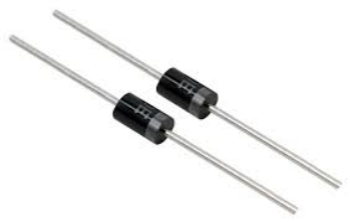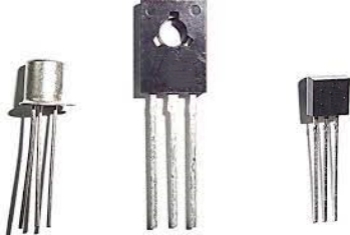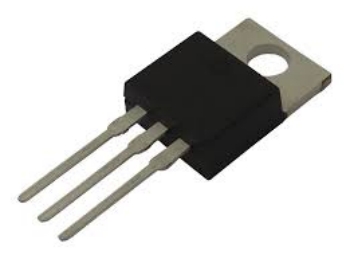Yitong of diodes, transistors and thyristors
Introduction to diodes
Definition of diode
A diode is a basic electronic device consisting of two electrodes, commonly called anode and cathode. It takes advantage of the special properties of the PN junction to only allow current to flow from one direction to the other. This unidirectional conductivity allows diodes to function as rectifiers or switches in circuits. In a rectifier, diodes convert alternating current into direct current; in switching circuits, diodes can control the on and off of current to realize the switching function of the circuit. The PN junction of the diode is made of semiconductor material, and its conductive performance depends on the structure and process of the semiconductor material and device. Diodes have the characteristics of small size, lightweight, high withstand voltage, and reliable operation, so they are widely used in various electronic equipment.

Characteristics of diodes
The main characteristics of diodes include unidirectional conductivity, forward bias, reverse bias, simple structure, small size, lightweight, and durability. Unidirectional conductivity is the most important characteristic of a diode; that is, when the diode is forward-biased, current can pass through it, while when it is reverse-biased, almost no current flows. This characteristic allows diodes to play a rectifying role in electronic technology. Forward bias means connecting the anode of the diode to the high potential end and the cathode to the low potential end; then, the diode will conduct. Reverse bias means connecting the anode of the diode to the low-potential end and the cathode to the high-potential end. At this time, the diode is in a cut-off state. In addition, diodes also have the characteristics of simple structure, small size, lightweight, and durability, making them widely used in electronics, communications, industry, aviation, aerospace, and other fields.
Introduction to transistors
Definition of transistor
Transistors generally refer to any single component based on semiconductor materials, including diodes, transistors, field effect transistors, thyristors, etc., made of various semiconductor materials. Transistors are sometimes referred to as transistors. It is a solid semiconductor device with multiple functions such as detection, rectification, amplification, switching, voltage stabilization, and signal modulation.

Characteristics of transistors
As an important electronic component, the transistor has the following characteristics:
1. High gain: Transistors can amplify input signals with large gain amplitude.
2. High speed: Transistors switch very quickly and can work in high-frequency or ultra-high-frequency circuits.
3. Small size: Transistors are small in size and light in weight, making them easy to integrate into compact circuits.
4. Low power consumption: The transistor consumes less power during normal operation, which can improve the battery life of the device.
5. Good stability: The transistor has stable performance, small distortion, and high reliability.
6. High voltage resistance: Transistors can withstand higher voltages and are suitable for high-voltage circuits.
7. Long life: The transistor has a long life and can work stably for a long time.
Introduction to thyristor
Definition of thyristor
A thyristor is the abbreviation of thyristor, also known as a silicon-controlled rectifier (SCR). It was formerly referred to as silicon silicon-controlled rectifier. The thyristor can be controlled to be turned on by signals but cannot be controlled to turn off, so it is called a semi-controlled device. The name thyristor often refers specifically to a basic type of thyristor - ordinary thyristor. Thyristors can be used as switches to control the on and off of current; in addition, thyristors have strong switching characteristics. Under forward voltage, the current can be controlled arbitrarily, but under reverse voltage, the current cannot flow. According to the direction of operating current, thyristors are divided into unidirectional thyristors and bidirectional thyristors. Unidirectional thyristors can only control current in one direction, while bidirectional thyristors can control current in both directions at the same time.

Characteristics of thyristor
Thyristors have the following characteristics:
1. High speed: Thyristors have faster switching speeds than ordinary transistors, which can reach the millisecond level, so they are suitable for high-frequency control applications.
2. High precision: The output voltage of the thyristor can be accurately controlled to below the microvolt level, making it very suitable for precision control applications.
3. High reliability: The electrical performance indicators and voltage resistance of thyristors are much higher than those of ordinary transistors, so the reliability is better.
4. Low deviation: The output voltage stability of the thyristor is better.
5. High blocking capacity: Thyristor has high blocking capacity and can withstand higher current and voltage.
6. High insulation capability: Thyristors have good insulation properties and can resist external electromagnetic interference.
Comparison of diodes, transistors and thyristors
1. Structural differences: Both diodes and transistors are semiconductor devices, but their structures are different. A diode consists of a PN junction, while a transistor has three terminals (base, collector, and emitter). A thyristor is a three-terminal semiconductor device composed of multiple PN junctions.
2. Current control method: The current control of the transistor is achieved by changing the voltage between the base and the collector. The current control method of diodes and thyristors is different from that of transistors. The current control of the diode is achieved by forward biasing, while the trigger signal achieves the current control of the thyristor.
3. Application fields: Diodes are usually used as rectifiers or switches, while transistors are used as basic components of circuits such as amplifiers, switches, or logic gates. Thyristors are widely used in power conversion, control systems, and switching power supplies in power electronic equipment.
4. Performance differences: There are differences in performance between diodes, transistors, and thyristors. For example, the unidirectional conductivity of diodes makes them ideal for rectifiers and switches; the amplification capabilities of transistors make them ideal for amplifiers and switches; and the fast switching characteristics and high withstand voltage capabilities of thyristors make them ideal for power electronic devices ideal choice.
To sum up, diodes, transistors, and thyristors are three different semiconductor devices that differ in structure, current control method, application field, and performance.
